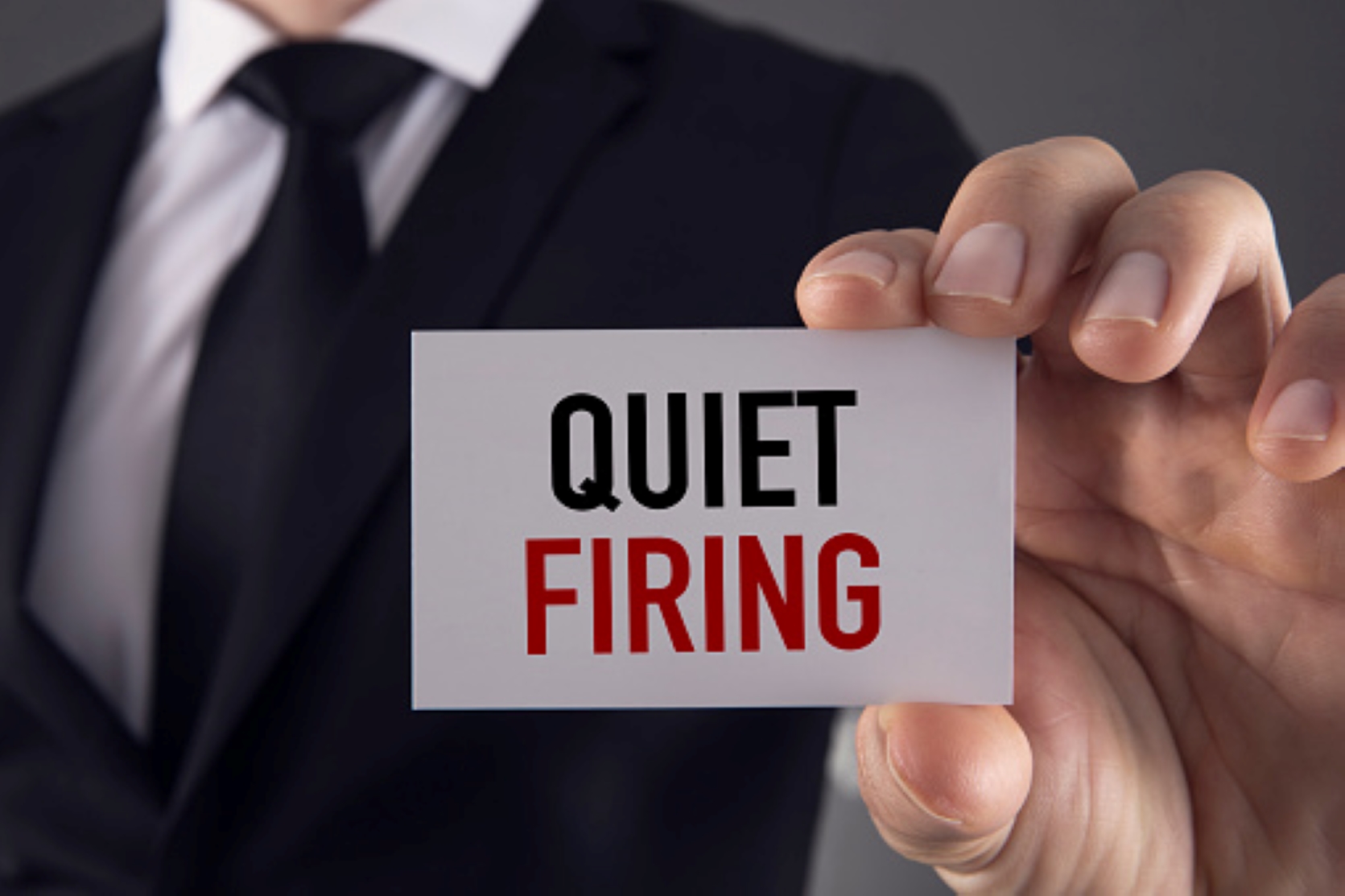Just as quiet quitting as an expression continues to gain vogue, the instances of quiet firing too have come into greater focus. The Great Resignation has triggered conversations around why employees feel disengaged at the workplace, its culture, what makes them hop from one job to another so often, and feel such high levels of misalignments between themselves and their employers. This has given rise to new office colloquialisms such as the one this blog is about.
While quiet quitting is basically doing what is expected of you in a position of employment as per the contract and strictly sticking to the amount of hours at work as stipulated in it, quiet firing is supposedly a deliberate attempt by an organization or an employer or a manager to create a hostile or terrifying environment that makes you voluntarily quit the job. It is a very subtle and passive aggressive approach towards separation of employment. Curiously, this method of firing was formerly known as “constructive dismissal” or “constructive termination.” So the concept is not new whatsoever!
Why would employers not fire workers directly, one may ask? Perhaps to appear less harsh. But very likely to avoid the legal, financial, and reputational costs associated with it. It could also well be a move to improve their productivity and become capital efficient! So as part of their downsizing strategy they may eliminate the staff that they no longer consider useful. With the cut in spending, they save resources which they may direct to areas they consider are of high priority. But you, or your livelihood is not!

A LinkedIn News poll with over 20,000 respondents recently stated that 48% of employees have seen quiet firing in the workplace, and 35% have faced it during their careers with merely 13 % believing that quiet firing “is not a thing.” Another representative national survey of 2,475 people by the law firm Irwin Mitchel found out that “28% of women have left their jobs after being made to feel uncomfortable at work (compared to 22% of men), and 23% of women have been actively ignored by their manager (compared to 19% of men).”
Quiet firing could also be very discriminatory in nature when it is used as a tactic against only a certain sort of people as its target. In such cases the employees are absolutely demoralized, marginalized, ostracized, mentally distressed, may feel terrible about their identity, and begin to question themselves about their worth. They shall not feel valued or respected in their workspace and a gnawing sense of insecurity creeps into them.
Such toxic or difficult working conditions may also engender interpersonal rivalry, misunderstandings with colleagues, and breed malevolence among them. When their reaction to it gets out of bounds, they may be ultimately forced to resign. Or, the employee may not find any satisfaction with their job in such a hostile office mileu, and so they see no option but to switch to another company.
Quiet firing is an unconscionable way of dismissing a worker not because of their lack of good performance or any valid reason of the sort, but in all likeliness because the company does not want to undertake any responsibility for the employees by way of offering them raises, defray any severance pay, contributing to their growth, or chalking out a proper transition plan.
And yet, in the end it is made to appear as though the employee quits on their own terms, because an employer being perceived as being malicious or punitive or cunning by employees could be quite damaging to their reputation. They will be seen as cowardly and unfit to be in any position of leadership as they cannot rise up to the challenges and problems in their company in any mature fashion. It poisons the team’s trust in the employer or their ability to build a conducive work culture that is based on respect, honesty and fairness.
Before we get to how an employee actually knows that they are being quiet-fired, what we must bear in mind is that the most well-intentioned managers may not be all that mindful of their behavior towards certain employees. Secondly, even if they act consciously with a particular objective or so as to obtain a certain outcome, the impact that it has on an employee could be quite different.
There could be several reasons why an employee may feel that they are being nudged out of work. They could be clear as a manager purposefully not inviting them to a particular meeting, withholding their promotions/raises, offering tasks that are either not in their remit or outside of their known skillset, or which they simply find undesirable, to something as vague as not providing them any meaningful feedback/guidance on their projects, not divulging any relevant piece of information, ignoring or mischievously mocking at office gatherings, or taking their amenability for granted.
Badgefree believes that if an employer tries to passively drive you away from work rather than engaging with you, it only betrays their sense of work ethic, and is therefore, not your problem. But before you arrive at any judgement about your employer’s attitude towards you, you must learn why they behave the way they do with you and if indeed that behaviour is only displayed to you or your other colleagues as well.
Also, understand their history of dealing with employees. If you do not find any of that to be particularly impressive, and in case your attempts to connect with them are not forthcomingly indulged with, the decision of whether you should stay or leave entirely lies with you, but must be taken depending upon the circumstances. May choose to go all blazers and expose their toxic behaviour if they are being easily recognized and called out, as is the case these days at several organizations. However, if you choose to stick to your present job, then you may try quitting quietly.





